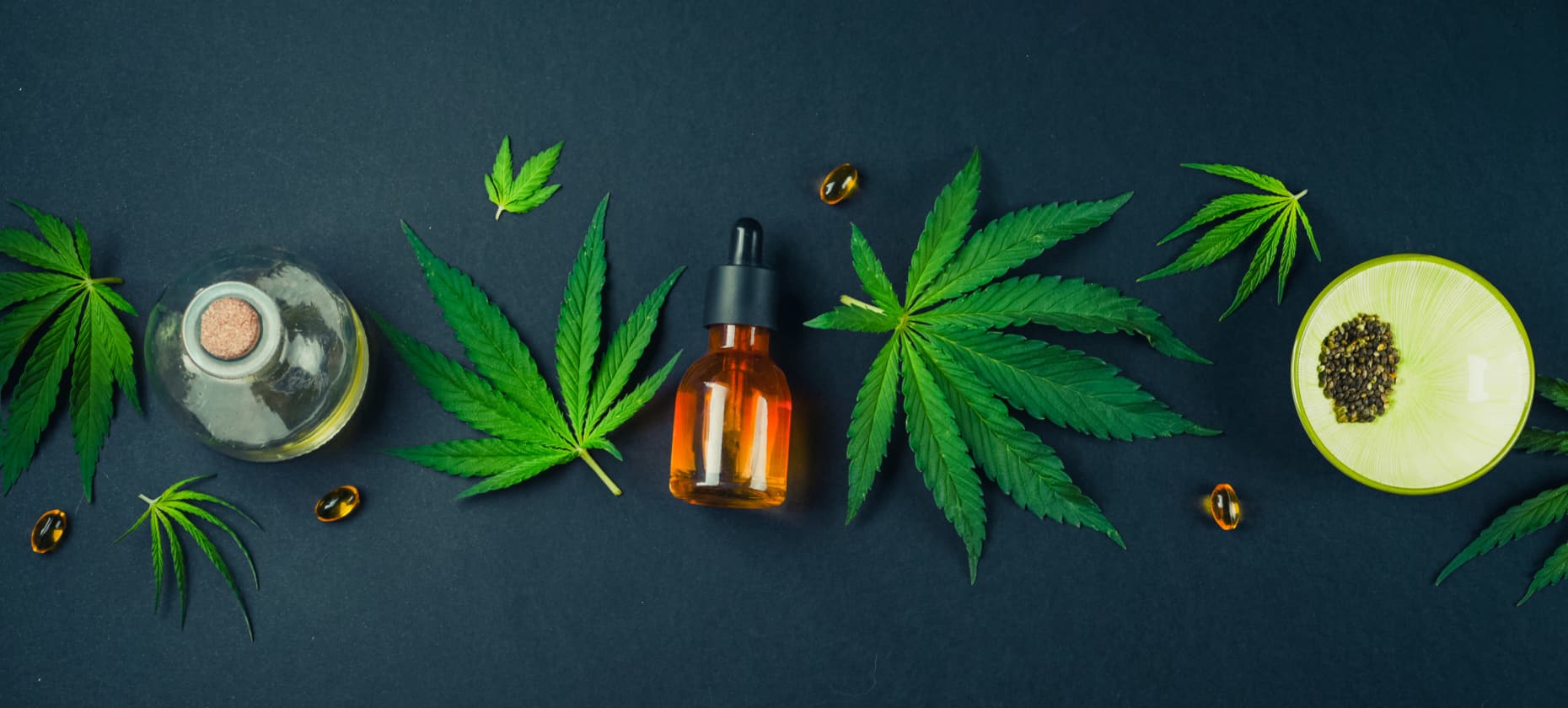
Cannabinoids are naturally occurring compounds that are found in the cannabis plant. These compounds are thought to be responsible for giving cannabis most of its intoxicating, psychoactive, and therapeutic effects. The cannabinoids in cannabis work with our endocannabinoid systems—which we’ll cover more in another post!
By now, most cannabis consumers are familiar with THC and CBD – the two most abundant and well-known cannabinoids in the cannabis plant. However, over 100 different cannabinoids have actually been found in the cannabis plant. Each cannabinoid has its own story and potential benefits. Here are the 10 most important cannabinoids that we think you should know about.
THC
[btx_image image_id=”1562″ link=”/” position=”center”][/btx_image]
THC (tetrahydrocannabinol) is the cannabinoid that is primarily responsible for the intoxicating and mind-altering effects of cannabis. THC produces uplifting and euphoric effects – partially by stimulating the reward center of the brain to release dopamine. THC is also believed to produce a range of therapeutic effects including appetite stimulation, sleepiness, inflammation relief, pain relief, and more.
THCA
THCA (tetrahydrocannabinolic acid) is the acidic precursor to THC. It is a non-intoxicating cannabinoid that is found in live and raw cannabis. Similar to THC, THCA is also believed to have a range of therapeutic abilities including anti-inflammatory, antiemetic, and neuroprotective properties.
THCA is visible to the naked eye in the form of the shiny crystals that cover cannabis buds. It is thought that cannabis plants produce THCA as a defense against natural predators. When exposed to high temperatures (like through decarboxylation), THCA is converted to THC, allowing cannabis to produce its mind-altering effects.
CBD
[btx_image image_id=”1563″ link=”/” position=”center”][/btx_image]
CBD (cannabidiol) is the second-most abundant and well-known cannabinoid in cannabis. While it is thought to be psychoactive, it does not produce the same intoxicating effects as THC. Instead, CBD produces sedating and relaxing effects that are not mind-altering. CBD is also thought to have a range of therapeutic properties including potential anti-anxiety, pain-relieving, and anti-epileptic characteristics.
CBDA
Like THCA, CBDA (cannabidiolic acid) is the acidic precursor to CBD, and can be found in live and raw cannabis. And just like the relationship between THCA and THC, CBDA is converted into CBD upon being exposed to heat and decarboxylated.
Also like THCA, CBDA is thought to have therapeutic properties of its own. One 2007 study found that CBDA may have anti-inflammatory properties, a 2013 study found that CBDA may have potent nausea-fighting properties, and a 2017 study found that CBDA had potential anti-tumor properties.
CBG
CBG (cannabigerol) is a lesser-known cannabinoid that is present in small quantities (less than 1%) in most cannabis strains. CBG is believed to exert its psychoactive and therapeutic effects by directly interacting with CB1 and CB2 cell receptors in the brain.
CBG is thought to be particularly effective in treating glaucoma and has shown potential as a cancer fighter. Additionally, it may also have anti-inflammatory and neuroprotective properties. CBG is the non-acidic form of CBGA.
CBGA
CBGA (cannabigerolic acid) is a unique cannabinoid known as “the mother of all cannabinoids.” As a cannabis plant matures, enzymes that are specific to each cannabis strain convert CBGA into a combination of THCA, CBDA, and CBCA. The remaining CBGA that is not converted continues to exist in the cannabis plant until it is decarboxylated, at which point it is converted into CBG.
CBC
CBC (cannabichromene) is a minor cannabinoid present in small amounts in certain strains. CBC is a non-intoxicating cannabinoid, likely due to the fact that it has a hard time binding to cell receptors in the brain. However, CBC is thought to have numerous therapeutic benefits including potential anti-inflammatory, pain-relieving, and cancer-fighting properties.
CBN
CBN (cannabinol) is a non-intoxicating cannabinoid that is created as THC ages. As a result, there tends to be more of it in older cannabis where THC has had ample time to degrade. CBN is thought to potentially have anti-inflammatory, neuroprotective, and antibacterial properties, in addition to potentially being a powerful appetite stimulant. Early studies suggest that it’s also great for those fighting insomnia.
THCV
[btx_image image_id=”1564″ link=”/” position=”center”][/btx_image]
THCV and CBDV are minor cannabinoids that belong to a class of cannabinoids known as varin cannabinoids.
THCV (tetrahydrocannabivarin) is a non-intoxicating derivative of THC. While THC and THCV share a similar molecular structure, THC activates CB1 cell receptors, while THCV functions as an antagonist on these receptors. THCV is believed to have its own therapeutic properties including possible benefits related to appetite reduction and glucose intolerance.
CBDV
CBDV (cannabidivarin) is a psychoactive yet non-intoxicating derivative of CBD. Typically, plants that are high in CBD will also have higher levels of CBDV. This cannabinoid has shown potential in relieving some of the effects of epilepsy and muscular dystrophy.
Finding Your Ideal Cannabinoid Ratios
When you purchase a cannabis product from Cloud Cannabis, you’ll see a label on it that shows the percentages of cannabinoids and terpenes present. This can help you better determine what effects a particular product may have. With time and experimentation, you’ll be able to find your ideal cannabinoid ratios!
Ready to get started? Find your nearest location to place your order now.


